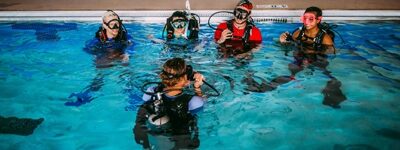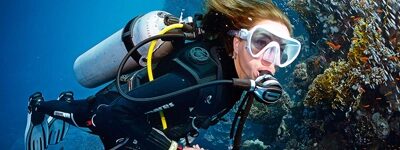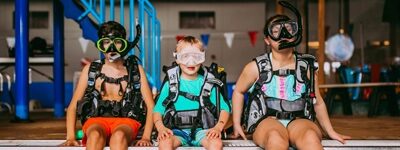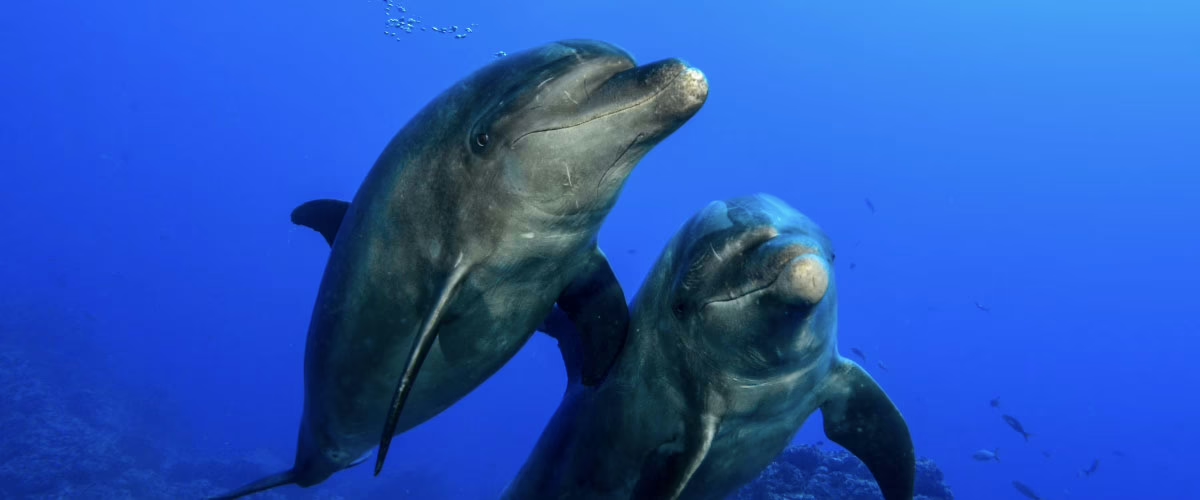
Scuba Diving with Dolphins: If You’re Lucky Enough
There’s nothing quite like seeing dolphins in the wild. Whether it’s a quick glimpse of dorsal fins from a dive boat or—if you’re really lucky—a close encounter underwater, these moments tend to stay with divers forever.
But let’s set expectations right away: underwater dolphin encounters while diving are rare. Most sightings happen while the dive boat is moving between sites. Dolphins love to ride the bow wake, sometimes even leaping or spinning out of the water in groups. While it can happen, being approached by dolphins during a dive is one of those unforgettable “right place, right time” moments that can’t be guaranteed.
That said, there are certain dive destinations where your chances go up. Here are two iconic locations where dolphin encounters are more common—and the amazing species you might see there.
Fun Fact:
The Cetacea family, which includes all whales, dolphins, and porpoises, is divided into two suborders: Odontocetes (toothed whales) and Mysticetes (baleen whales). Cetacea comes from the Greek word ketos, meaning “whale.” Dolphins are smaller species of whales and belong to the Delphinidae family. The Greek word for dolphin, delphys, actually means “womb,” highlighting their mammalian nature.
Dolphins in Socorro:
The Socorro Islands are part of the Revillagigedo Archipelago, a remote group of volcanic islands in the Pacific Ocean, often referred to as the “Galápagos of Mexico” for their rich marine biodiversity including—mantas, sharks, humpbacks, and yes, dolphins.
The dolphins here are particularly famous for their playful nature and curiosity. Often, they are seen approaching divers, engaging in interactions, and even guiding their calves toward human observers. These dolphins have earned a reputation for being one of the most friendly and interactive populations in the world, making every sighting a memorable and magical experience for lucky divers.
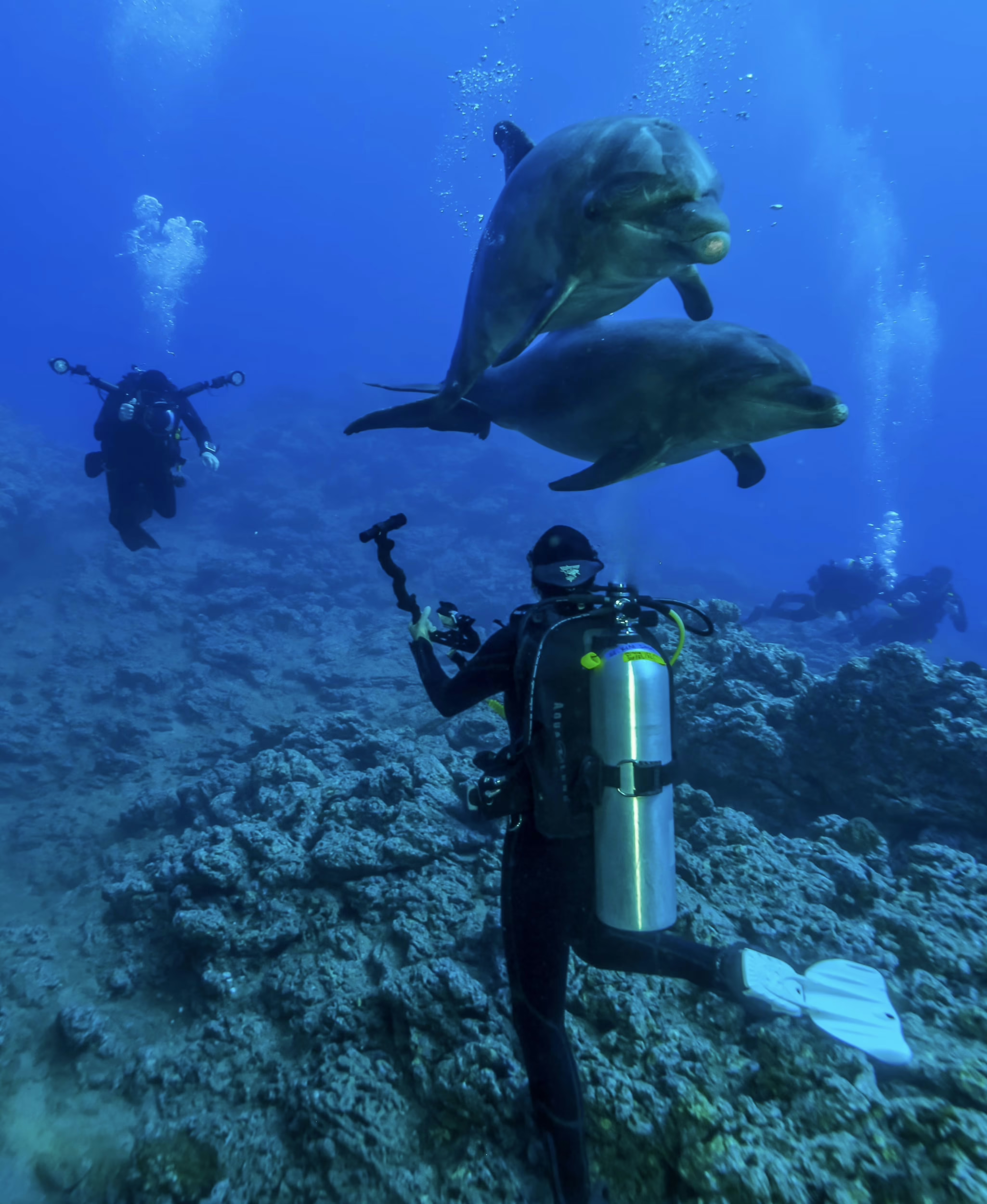
Bottlenose Dolphins
These dolphins in Socorro seem unusually curious about divers. They’re known to swim alongside you, making eye contact in a way that feels oddly personal. If you are a dolphin lover who is looking for an up close and personal experience with wild dolphins, Socorro might be your best bet.
Spinner Dolphin
Diving and a show?! These dolphins are typically seen from the surface and are known for their showy aerial spins and love of bow-riding.
A Memory from The Diver:
“We were lucky enough to find sharks and bottlenose dolphins in Socorro as we motored to our dive destinations. They were all checking us out as we were checking them out.“
Dolphins in the Galápagos:
According to the Galapagos Conservation Trust, around 24 species of Cetaceans have been recorded in the Galapagos Marine Reserve. While not native, three species of dolphin – bottlenose, spinner, and common dolphins – frequently visit the group of islands. Other dolphin species are occasionally spotted in the area due to hunting or migration.
Bottlenose Dolphins
These dolphins are frequently spotted in the Galápagos and are known for their intelligence. Divers might see them both at the surface and occasionally while diving below the surface.
Spinner Dolphin
Known for their acrobatic spins and jumps out of the water, the Spinner Dolphin is one of the most commonly sighted species in the Galápagos. They are often seen in large groups and are known for their energetic displays.
Common Dolphins
The Common Dolphin, encompasses three species—the short-beaked dolphin, the long-beaked dolphin, and the Arabian common dolphin. Fast swimmers with beautiful hourglass patterns on their sides. Look for large groups racing the dive boat.
Risso's Dolphins
Recognized by their rounded heads, pale skin, and scarred bodies, these dolphins have an ancient look to them. Mysterious and stunning, Risso’s dolphins are often spotted in smaller, tight-knit pods in the open ocean, and while they may be seen in the Galápagos during migration, they are not native to the islands.
Pantropical Spotted Dolphins
Smaller in size, with sleek bodies and distinctive spots. Known for their acrobatic and playful behavior, they’re often seen leaping high into the air and performing spectacular aerial displays.
Orcas
These dolphins, yes, dolphins, are sometimes attracted to the Galapagos area by the abundance of prey, particularly sea lions. If you’re lucky enough to see one, consider yourself one of the fortunate few, as orca sightings are extremely rare in these waters. And remember, there’s no record of orcas attacking humans in the wild. Observe their beauty and let them swim on.
A Memory from The Diver:
“We were in the Galapagos a few years ago, where we saw dolphins on quite a few of our dives, plus a pod of Orcas and Whale Sharks. What a magnificent memory!“
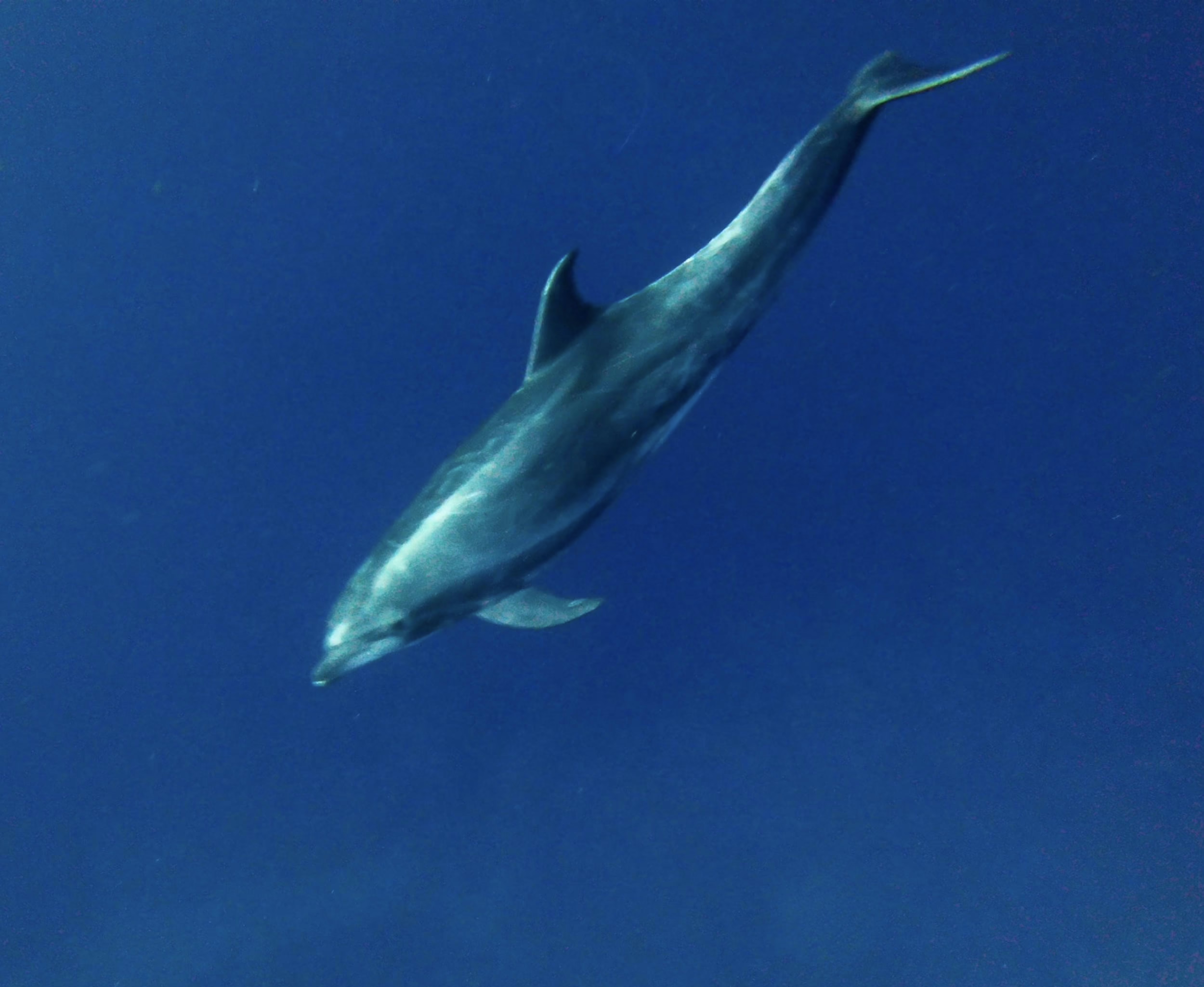
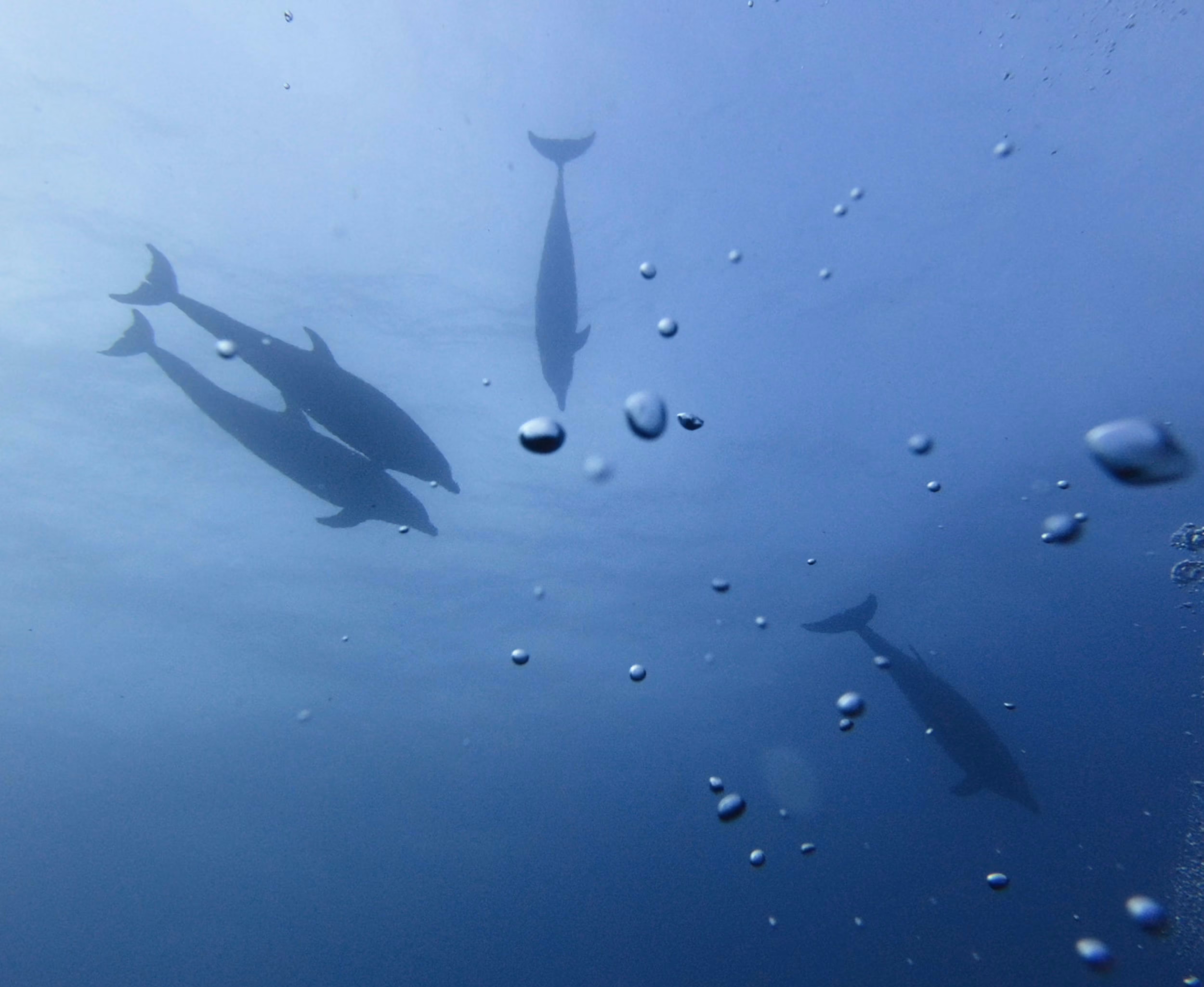
Fun Fact:
Cetaceans possess one or two external nostrils, called blowholes, located on the top of their heads. Odontocetes(toothed whales, like dolphins) have a single blowhole, while Mysticetes (baleen whales) have two. These blowholes are essential for efficient breathing, allowing cetaceans to quickly exhale air and dive deep without losing valuable time at the surface.
Plan a trip and cross your fingers!
While dolphin encounters can never be guaranteed, traveling to destinations like the Galápagos or Socorro gives you a better chance at experiencing the ocean’s most charismatic mammals.
View our upcoming dive trips and maybe, just maybe, you’ll have your dolphin story to share with others.
I’d like to leave you with a few reflections from one diver to another.
If you’re not in the water, you’ll never experience the unbelievable wonders the underwater world has to offer. We all share this Earth. When we dive, we are visitors in a world that marine life calls home—a world they depend on to survive. It’s our responsibility to respect and protect it.
Take only pictures, and leave only bubbles.

